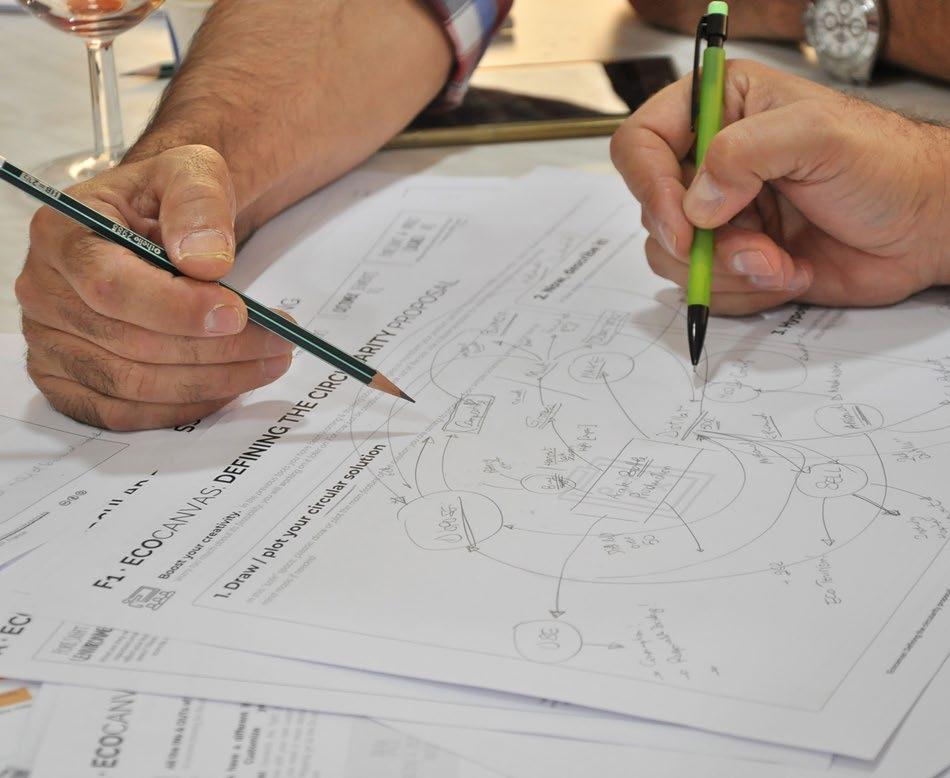
4 minute read
Self-diagnosis by condominium managers
Self-diagnosis by condominium managers
Ipso-Facto
Advertisement

Self-diagnosis by condominium managers
Organisation and country : L'Echappée des copropriétés, France Target group : condominium inhabitants Age group : all Context : Group intelligence
When public policies are written in order to redress condominium complex situations (financial problems, building problems…), inhabitants are almost never consulted. These policies, these plans are written according to a diagnosis done by external professionals. In result, we can usually find a great deal of frustration among inhabitants, that see that the measures recommended neglect their own plans and desires for their own condominium.
In this context, l’Echappée des Copropriété propose to « condominium managers » (an 92
active group of people in charge of managing the condominium issues along with the syndic) to do a self-diagnosis and to design an action plan for their community, based on their resources, their blocking points and their wishes. The idea is to make this practice a habit in public intervention, and that all over the world. Ask the people concern by the measures before designing them !
How does the process engage citizens?
It makes the condominium managers fully actors of their redressing plan. They aren’t merely consulted, but they are asked to analyse their situation, to look at their condominium with a critical eye and to project themselves into the nearer future to create together a plan based on their wishes.
So, it implies a fully participation and engagement of the managers, and also it states a particular way of policy making and citizen engagement. The managers taking part in this process, are testing a tool and a practice that puts them in the centre of the reflection and makes them actors, as said. Our vision is that by this, they will be more inclined to participate as well in other matters of society. On the other hand, institutions will also get used to include citizens earlier and significantly in the co-creation process.
Pedagogic/methodological aspects
This practice happens in a 2 to 3 hours workshop. The group of condominium managers is asked to reflect about three questions : What’s the starting point? what are the positive and negative points of our community? Where do we wish to go? What is the ideal situation? How do we get there? What’s our action plan? These questions are asked in three different and progressive times. For each step, participants are allowed 5 minutes of individual and silent thinking, then they share their thoughts with the rest of the group and a discussion is facilitated to exploit the inputs. For the third question, the actions are placed on a timeline, and prioritize according to their feasibility and temporality. At the end of the workshop, participants should engage in some little action that starts to put the plan in place. The materials needed : • Big papers • Markers • Post-it • Blue tac

SWOT
Strength It puts the inhabitants in a power position. They are the actors and creators of their own action plan. Weakness It’s hard to put this practice in action in condominiums where the managers are either non existent or not very invested. It can be difficult to reunite them for the workshop. Opportunities Citizen participation is more and more preached and looked for by institutions. They are demanding of tools that can make this participation easy and productive. Threats It can be really hard to make this practice enter into the policy making process. Usually, the time allowed to do this workshop and the funding, comes too late, when the action plan has already been decided by the institutions and professionals.
Which aspects are transferable?
The idea of a starting an action with a group by asking its members how they want this action to happen, and what are their resources, blockages and wishes.
What kind of change is created?
The managers taking part in this process, are testing a tool and a practice that puts them in the centre of the reflection and makes them
actors, as said. Our vision is that by this, they will be more inclined to participate as well in other matters of society. On the other hand, institutions will also get used to include citizens earlier and significantly in the cocreation process.
Everyone on the floor, everyone contributes
A self-diagnosis made in La Cité de l’Hers, a condominium in Toulouse, allowed us to highlight the vigilance to have to give everyone the floor, so that everyone can contribute. Post-it are a tool facilitating in this context. Also, the important thing in this time is not to focus on problems but to focus on positive points too. We have noticed that this self-diagnosis has a liberating aspect for condominium responsibles, allowing them to provide their own diagnosis in a moment of collective awareness. It was a founding moment for the group. After this experience condominium responsibles wanted to keep their production in their room. It was the starting point for them to build a strategy together. This experience at the Cité de l’Hers showed the catharsis aspect of expressing problems and fears, but also of being able to solve them. It was a pretty positive energy.

Conclusion
It is quite easy to do, and very accessible to participants of all kinds. Yet, its output is powerful and portrays an accurate image of the condominium and most of all, its group dynamics. It is innovative because no one has created a space like this one for condominium inhabitants, and the framework that we propose is very different of the ones that are usually offered to them, very formal and vertical. It is special because it opens a new possibility, a different way of policy making in condominiums.


